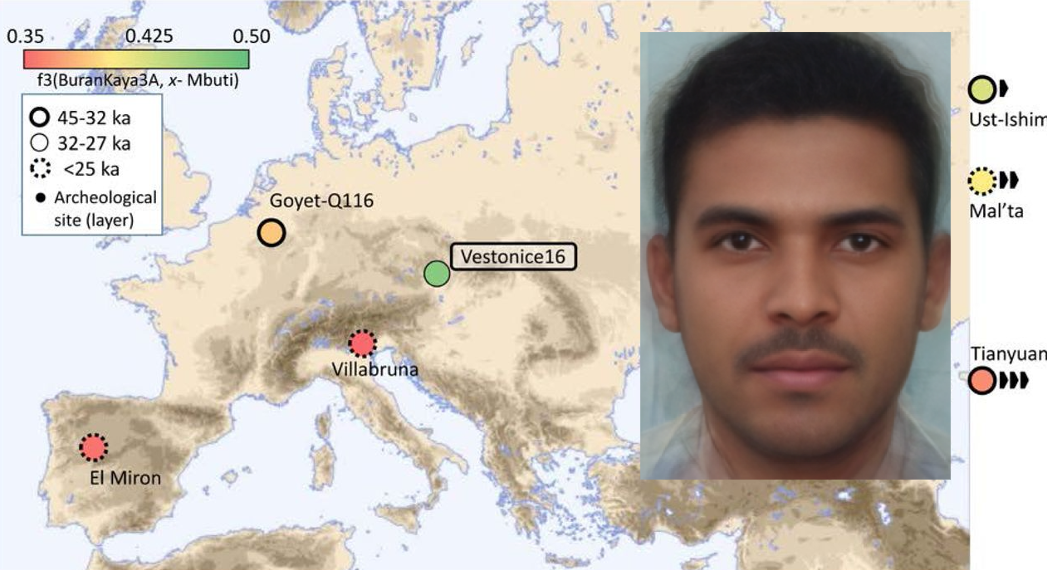
Goyet-Q116 Gravettian UP Genome
The Gravettians, a prominent Upper Paleolithic culture that thrived across Europe between 30,000 and 20,000 years ago, played a significant role in shaping the genetics of European hunter-gatherers. As one of the early human populations to settle widely across Europe, their genetic legacy is evident in the genomes of subsequent European populations. Studies of ancient DNA have revealed that the Gravettians contributed to the gene pool of later hunter-gatherer groups, influencing the genetic makeup of prehistoric and even modern Europeans. The Gravettian period is crucial for understanding the prehistory of Europe, as it represents a time when early human populations adapted to the harsh conditions of the Last Glacial Maximum, developing advanced hunting techniques and complex social structures.
The history of human migration in West Eurasia is deeply intertwined with the Gravettians, who were part of a broader pattern of human movement and settlement across the region. The genome of Europeans today reflects this intricate history, with traces of Gravettian ancestry still detectable in modern populations. These early hunter-gatherers migrated and spread across vast areas, from the Iberian Peninsula to the Russian Plains, leaving behind a rich archaeological record that includes distinctive tools, Venus figurines, and evidence of early symbolic expression. By studying the Gravettians and their genetic contributions, researchers can gain insights into the broader patterns of human migration and interaction in prehistoric Europe, shedding light on how these ancient populations adapted to their environments and interacted with one another.
